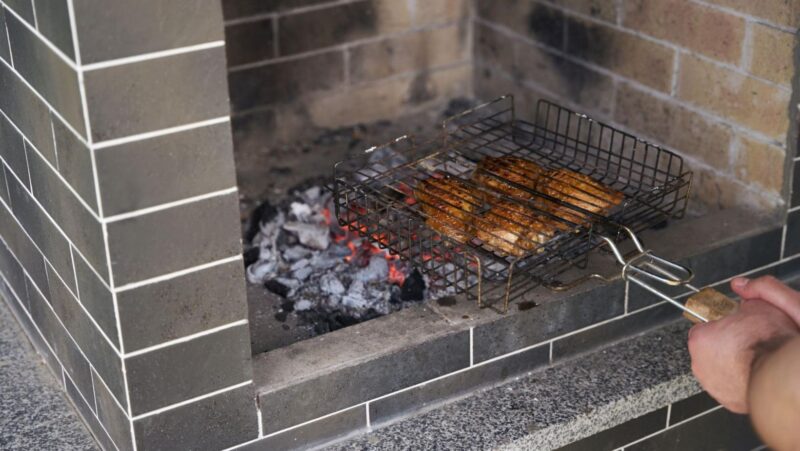
Exterior paint is not merely a cosmetic choice for your home; it serves as a protective shield against the elements, preserving the integrity of your dwelling. The lifespan of exterior paint is influenced by various factors, including the quality of the paint, the climate it must endure, and the amount of preparation done before application.
In this guide, we’ll explore these critical factors and provide insider tips on selecting and applying paint that will retain its allure and protective properties for years.
Choosing the Right Paint
The paint quality you choose is undoubtedly the most significant factor in determining lifespan. As a general rule, higher-quality paints tend to have better adhesion and resistance to fading, cracking, and peeling. While they may be more expensive upfront, investing in high-quality paint can save you money in the long run by reducing the need for frequent repainting.
When selecting paint, look for options with high acrylic resins and pigments, as these ingredients provide superior protection against UV rays and moisture. Additionally, opt for paints with higher sheen levels, as they are more durable and easier to clean.
Preparing the Surface
The secret to long-lasting exterior paint lies in proper preparation. Before applying paint, the surface must be clean, dry, and free of any debris or loose paint. Begin by power washing the exterior to remove dirt, grime, and mildew. Next, scrape away any flaking or peeling paint and sand down rough areas. Repair cracks or holes with a suitable filler and prime these spots before painting.

Another essential step in preparing the surface is ensuring it is properly primed. A quality primer creates a strong bond between the paint and the surface, improving adhesion and longevity. Be sure to use a primer that is compatible with your chosen paint type.
Climate Considerations
The climate in which you live can greatly impact the lifespan of exterior paint. Extreme temperatures, high humidity, and frequent rain or harsh sunlight exposure can all contribute to premature paint failure. If you live in an area with these conditions, it is crucial to choose a high-quality, weather-resistant paint and take extra precautions during application.
Consider using lighter colors that reflect the sun’s rays rather than absorbing them in hot climates. In areas with significant moisture or humidity, opt for paints with mildewcides to prevent mold or mildew growth.
Proper Application Techniques
Even with high-quality paint, proper application techniques are crucial for achieving long-lasting results. Begin by applying a thin, even coat of paint and allowing it to dry completely before applying a second coat. Avoid painting in direct sunlight, as this can cause the paint to dry too quickly and potentially lead to cracking or uneven application.
When using a brush or roller, apply the paint in one direction for a smooth and consistent finish. Consider using a sprayer for even coverage for larger or more challenging surfaces. Always follow the manufacturer’s recommended wait time between coats.
Additional Factors to Consider
- Environmental Exposure: The amount of sunlight, wind, and rain your home’s exterior is exposed to can greatly affect paint longevity.
- Maintenance Routine: Regular cleaning and inspections can catch issues before they lead to significant paint deterioration.
- Color Choice: Darker paints may absorb more heat, leading to faster fading and deterioration.
- Local Wildlife: Birds and insects can cause unexpected wear on exterior paint through nesting and other habits.
- Vegetation: Trees and plants near the house can scratch paint or create damp conditions that affect its longevity.
- Architectural Features: Overhangs, gutters, and the angle of siding can influence how paint weathers, with some areas being more protected than others.
- Quality of Previous Paint Jobs: The condition of the underlying layers of paint can impact the new coat’s adherence and overall lifespan.
- Seasonal Timing of Application: Painting during mild weather conditions allows for proper curing, impacting the finish and durability.
Exterior Paint vs. Interior Paint
Exterior and interior paints are formulated differently to meet the unique demands of their environments. Exterior paints are designed to withstand the harshness of outdoor conditions, including UV radiation, fluctuating temperatures, moisture, and varying weather patterns.
They contain additives that resist fading, mildew, and peeling, making them robust against the elements.

In contrast, interior paints are created with indoor air quality in mind, often having lower VOC (Volatile Organic Compounds) levels to ensure they are safe for enclosed spaces.
They are also engineered to resist staining and to be cleaned easily, accommodating the wear and tear of daily life inside a home. While exterior paints prioritize durability, interior paints focus on aesthetics and indoor environment safety.
Benefits of Professional Painting Services
While DIY painting may seem cost-effective, hiring a professional painting service can offer many benefits. Experienced painters have the expertise and equipment to prepare surfaces correctly and apply paint efficiently, ensuring maximum longevity. They also have access to high-quality paints that may only be available to some of the public.
Professional painters are also well-versed in safety protocols and techniques for working at heights, making it a safer option for multi-story homes. They can also provide color consultations and offer recommendations based on your home’s unique needs. You can check out professionals for exterior paint services here.
Conclusion
In conclusion, the quality of paint chosen, proper surface preparation, climate considerations, application techniques, and other factors all play a crucial role in determining the lifespan of exterior paint.
Investing in high-quality paints and hiring professional painting services can ensure a long-lasting and visually appealing finish for your home’s exterior. With proper care and maintenance, a well-painted exterior can protect your home for years to come.
So, it is important to take the time to research and choose the best paint and application methods for your specific needs.



